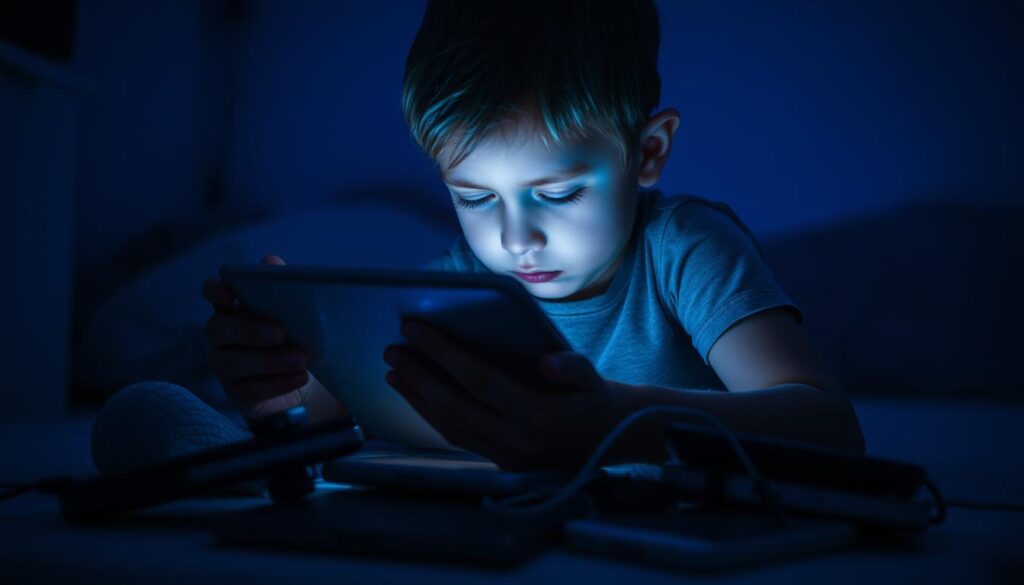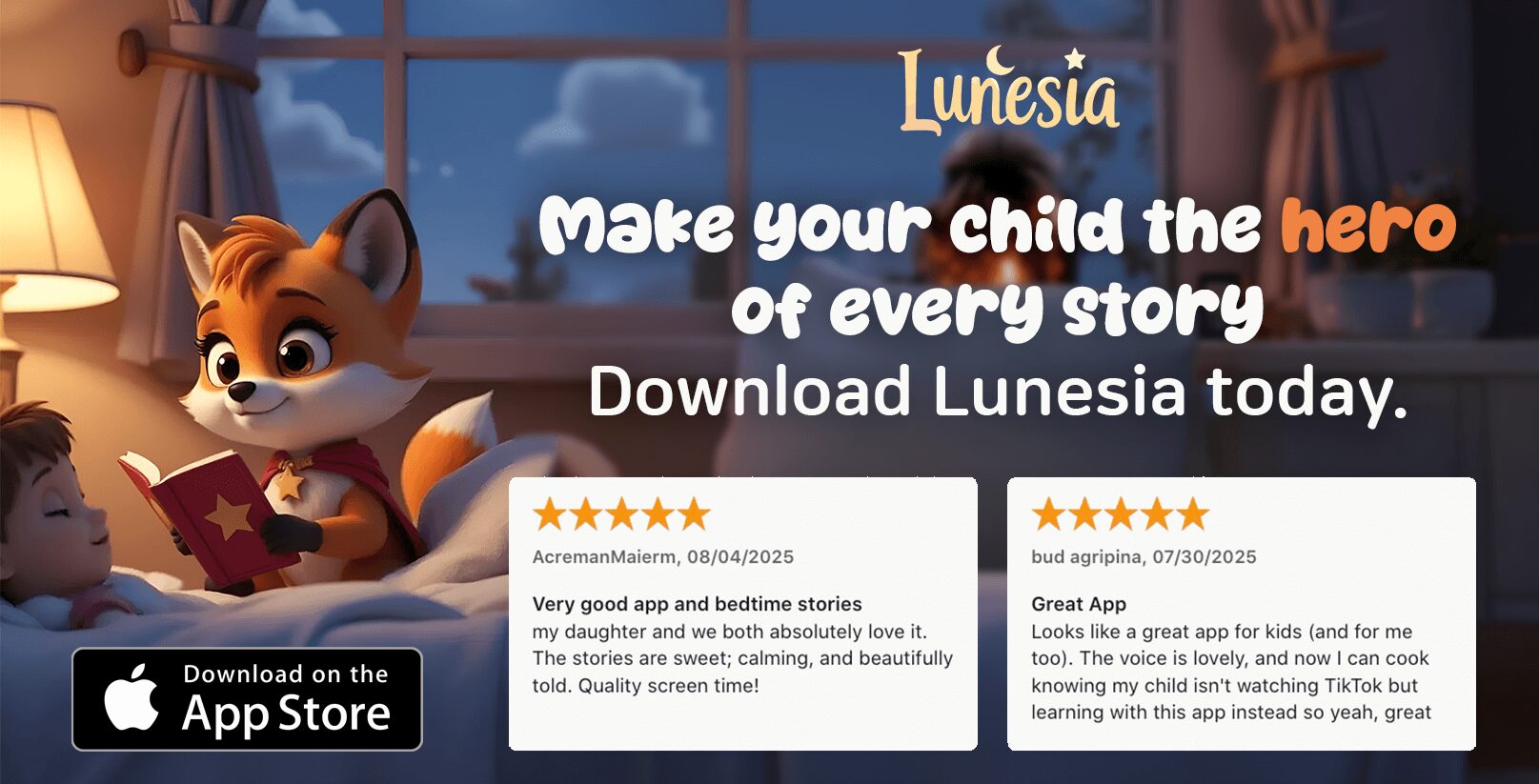As a parent, have you ever wondered how to navigate the digital world while ensuring your child still enjoys the great outdoors? In today’s fast-paced, technology-driven society, this balance is more crucial than ever.
Modern digital devices are both fascinating and challenging for our children. While they offer endless opportunities for learning and creativity, excessive screen time can have serious consequences.
Research reveals that teens spend an average of eight hours a day on screens, while preteens average about five and a half hours. This raises important questions about the impact of screen time on their development and the need to find a healthy balance.
In this article, we’ll explore the growing dilemma parents face today and discuss practical strategies to help you navigate this challenge and find what works best for your family.
Today’s Digital Dilemma: Understanding the Screen Time Challenge
In an era where screens are ubiquitous, understanding the impact of screen time on children is more crucial than ever. As a parent, you’re likely grappling with the challenge of managing your child’s screen time while ensuring they’re prepared for the digital future.
The Reality of Modern Childhood and Technology
Today’s childhood experience is vastly different from that of previous generations, with digital devices becoming an integral part of children’s lives from infancy. Research reveals that teens spend an average of eight hours a day on screens, while preteens average about five and a half hours. This trend is alarming, as studies link excessive screen time to poorer language development and behavioral issues.
Why Parents Are Concerned: Screen Time Statistics
Parents are increasingly concerned about the impact of screen time on their children’s development. According to Dr. Michelle Yang, “even background TV can negatively impact infant language development.” The statistics are concerning: prolonged screen use is linked to issues like decreased attention span and reduced physical activity. The COVID-19 pandemic has further exacerbated the issue, with research showing that elevated screen time levels haven’t decreased even after lockdown measures were lifted.
As we navigate this digital dilemma, it’s essential to strike a balance between allowing our children to be digitally literate and ensuring they don’t miss out on crucial developmental experiences that come from outdoor play. By understanding the challenges associated with screen time, we can take the first step towards creating a healthier balance for our children.
The Impact of Excessive Screen Time on Child Development
Research has shown that too much screen time can have far-reaching consequences for children’s cognitive, social, and emotional development. As a parent, understanding these effects is crucial in making informed decisions about your child’s screen use.
Cognitive and Language Development Concerns
Excessive screen time, especially in infants, has been linked to delays in communication and problem-solving skills. Dr. Michelle Yang’s studies reveal that infants exposed to over four hours of screens daily face significant delays by ages 2 and 4. This phenomenon, known as the “video deficit effect,” highlights that children learn less efficiently from screens compared to real-life interactions.

Behavioral and Social Effects
Too much screen time can also impact a child’s behavioral and social development. Potential links include attention problems, sleep disturbances, and reduced social skills development. It’s essential for parents to be aware of these risks and monitor their child’s screen use closely.
Expert Guidelines for Age-Appropriate Screen Time
The American Academy of Pediatrics provides clear guidelines for age-appropriate screen time. For children under 18 months, no screen time is recommended except for video calls. Between 18 and 24 months, high-quality educational content is acceptable with adult interaction. For children aged 2-5 years, limiting screen time to one hour of high-quality programming daily is suggested.
| Age Group | Recommended Screen Time |
|---|---|
| Under 18 months | No screen time except video calls |
| 18-24 months | High-quality content with adult interaction |
| 2-5 years | Limit to 1 hour of high-quality programming |
By following these guidelines and being mindful of the content your child consumes, you can help mitigate the negative effects of excessive screen time and support healthy development.
The Power of Outdoor Play: Benefits for Growing Minds and Bodies
Outdoor play is more than just a fun activity for kids; it’s a crucial aspect of their overall development. As a parent, understanding the benefits of outdoor play can help you make informed decisions about your child’s daily activities.
Physical Health and Development Benefits
Outdoor play significantly contributes to children’s physical health. When children engage in outdoor activities, they’re more likely to be physically active, which helps build their hearts, lungs, and muscles. Regular outdoor play can lead to stronger muscles, better coordination, and improved cardiovascular health. It’s also an excellent way to enhance their motor skills through activities like running, climbing, and jumping.
Cognitive and Emotional Advantages
Outdoor play isn’t just beneficial for physical health; it also has a profound impact on children’s cognitive and emotional development. Being in nature has been shown to reduce stress and anxiety in children while improving their mood and emotional regulation. Outdoor environments provide a rich sensory experience that fosters creative thinking and problem-solving skills. Moreover, unstructured outdoor play with peers helps children develop essential social skills like negotiation, cooperation, and conflict resolution.
How Nature Nurtures: The Science Behind Outdoor Play
The science behind outdoor play reveals that nature has a nurturing effect on children’s development. Regular exposure to the outdoors strengthens their immune systems and provides essential vitamin D, potentially reducing the number of sick days from school or daycare. Furthermore, outdoor environments encourage healthy risk-taking under parental supervision, which builds confidence and resilience in children. The sensory richness of natural environments also stimulates brain development in ways that screen-based activities cannot match.
By incorporating outdoor play into your child’s daily routine, you can provide them with a well-rounded foundation for growth and development. As we explore the benefits of outdoor play, it’s clear that it’s an essential component of a healthy and balanced lifestyle for children.
Lunesia vs Outdoor Play: Finding the Right Balance for Your Child

Striking a balance between screen time and outdoor activities is essential for your child’s overall well-being. As a parent, you’re not alone in this challenge. Many are seeking ways to ensure their children benefit from both the digital world and the great outdoors.
Can Screen Time and Outdoor Activities Coexist?
Research suggests that screen time and outdoor play are not mutually exclusive. In fact, they can complement each other when managed properly. For instance, educational content on platforms like Lunesia can be a valuable tool when used to spark interest in outdoor activities or to learn about nature.
By integrating screen time into a broader lifestyle that includes outdoor play, parents can create a balanced routine that supports their child’s development.
Research on How Outdoor Play Mitigates Screen Time Effects
A recent study found that higher screen time at age 2 was associated with lower communication and daily living skills at age 4. However, frequent outdoor play significantly alleviated these negative impacts, mediating 18% of the association with daily living skills.
This research underscores the importance of balancing screen time with outdoor activities to support healthy development in children.
Creating a Balanced Schedule That Works for Your Family
To achieve this balance, start by assessing your family’s current routine. Identify opportunities to replace screen time with outdoor activities or to use screen time more intentionally, such as watching educational content that encourages outdoor exploration.
By involving your child in the process of creating a balanced schedule, you can help them develop healthy media habits and a lifelong appreciation for outdoor play.
Conclusion: Practical Strategies for a Balanced Approach
As we navigate the complexities of modern parenting, finding the right balance between screen time and outdoor play is crucial for our children’s development. Creating a Family Media Use Plan is an effective strategy that helps set clear boundaries and designate screen-free zones, ensuring a balance between digital and outdoor activities.
By modeling healthy digital habits and engaging in co-viewing, parents can help their child develop a positive relationship with screens. It’s also important to make outdoor play appealing to screen-loving kids by incorporating elements of their favorite games or programs into outdoor activities. For instance, you can use nature photography apps or create outdoor scavenger hunts that utilize tablets to identify plants.
Here are some practical strategies to achieve a balanced approach:
- Establish clear boundaries and screen-free zones in your home.
- Model balanced media use yourself, as children learn from what we do.
- Blend the digital and natural worlds by using technology to enhance outdoor activities.
- Make outdoor play more appealing by incorporating elements of their favorite screen characters or games.
- Engage in co-viewing and co-playing to enhance learning and strengthen your relationship with your child.
- Provide seasonal ideas for outdoor play to ensure that weather doesn’t become a barrier.
- Gradually shift the balance if your child currently has too much screen time, using gentle approaches that won’t create resistance.
Finding the right balance is an ongoing process that will evolve as your child grows. The key is to be consistent and mindful of your child’s needs, ensuring that they spend their time in a way that supports their overall development and well-being. By doing so, you’ll help your child develop a healthy relationship with screens and a deep appreciation for the great outdoors.
FAQ
How can I ensure my child is getting the right balance between screen time and outdoor activities?
To achieve a balance, start by setting a schedule that allocates specific times for screen use and outdoor activities. Encourage physical activities and outdoor games, and consider enrolling your child in sports or outdoor programs to foster a love for nature and exercise.
What are the signs that my child is spending too much time on screens?
Signs of excessive screen time include a decrease in physical activity, less interest in outdoor activities, and potential negative impacts on behavior and social skills. Monitor your child’s screen use and look out for these indicators to determine if a balance needs to be restored.
Can outdoor activities really mitigate the negative effects of excessive screen time?
Yes, research suggests that engaging in outdoor activities can help counterbalance the negative effects of too much screen time. Outdoor activities promote physical health, improve cognitive function, and enhance emotional well-being, making them a valuable complement to a balanced lifestyle.
How can I make outdoor activities appealing to my child in today’s digital age?
Make outdoor activities fun by incorporating games, nature walks, or scavenger hunts that spark curiosity. You can also involve your child in planning outdoor activities, allowing them to take ownership and choose activities that interest them, making the experience more enjoyable.
Are there any guidelines for age-appropriate screen time that I should follow?
Yes, experts recommend guidelines for screen time based on age. For instance, children under two years should have no screen time except for video chatting, while children aged two to five should limit their screen time to one hour per day of high-quality educational content. Consult with pediatricians or child development experts for personalized advice.
How can I create a balanced schedule that works for my family?
To create a balanced schedule, assess your family’s lifestyle and preferences. Set realistic goals, such as allocating at least one hour daily for outdoor activities and limiting screen time to specific hours. Be flexible and adjust the schedule as needed to accommodate changing needs and circumstances.




